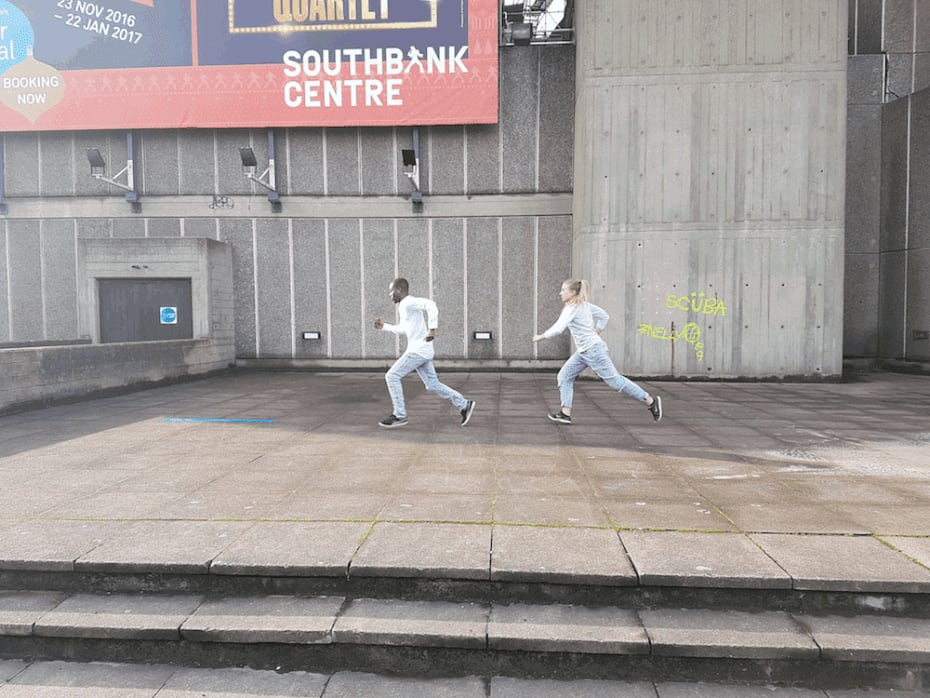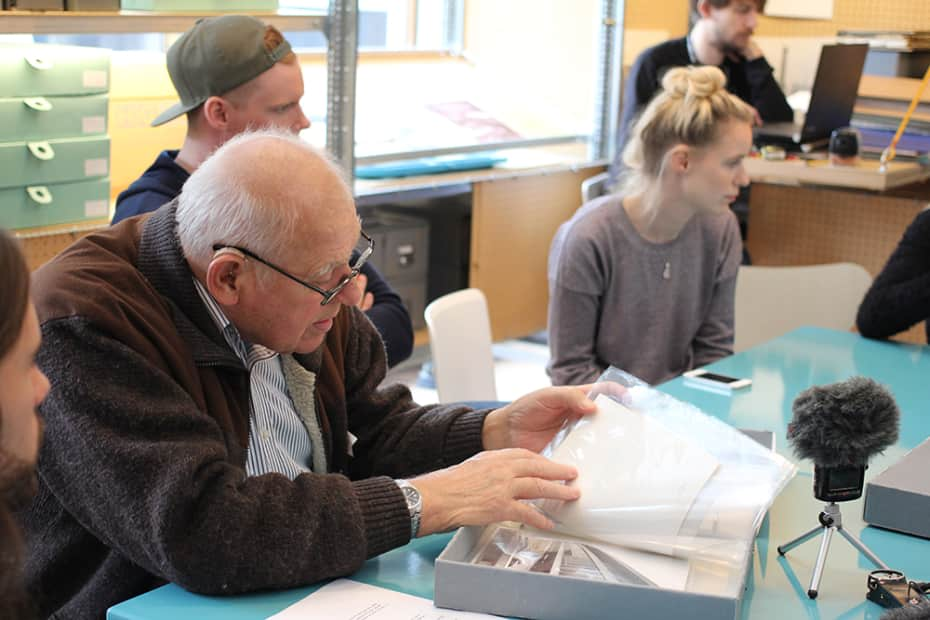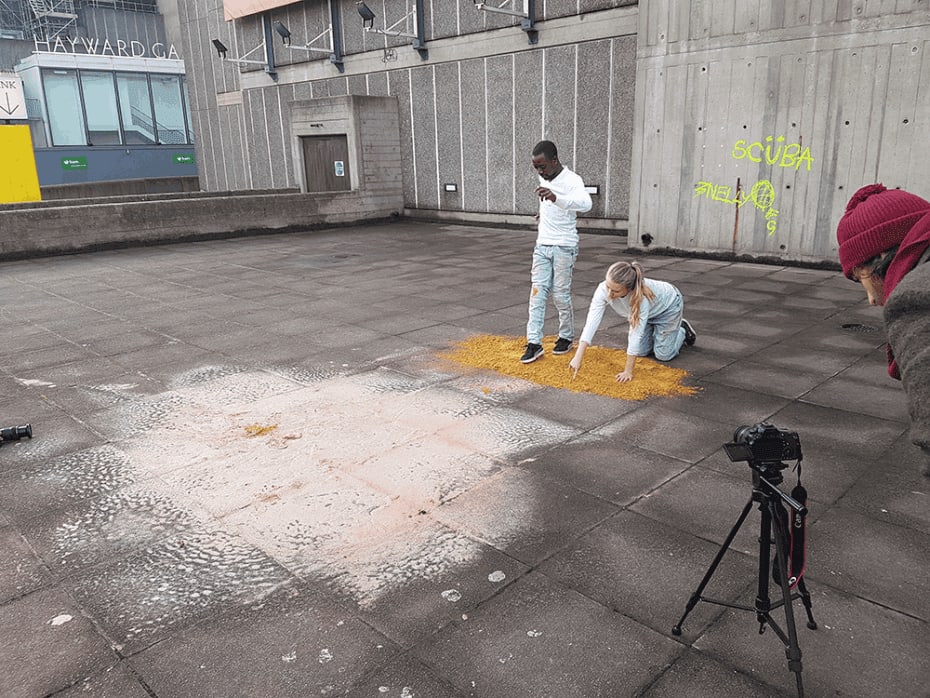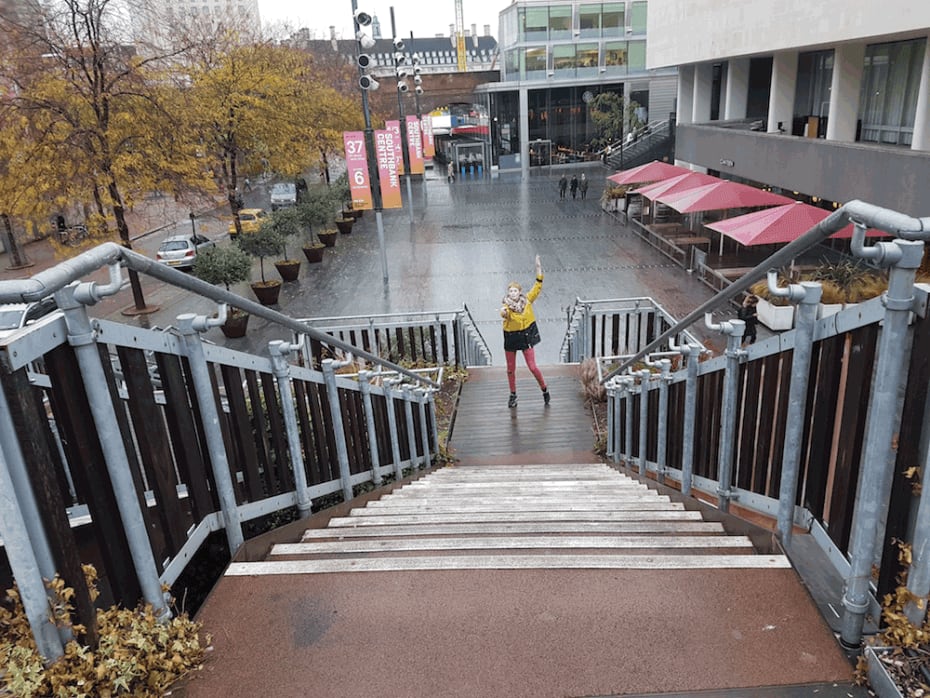Heritage: A User's Manual
This project was between MA Culture, Criticism and Curation students and London’s Southbank Centre, which is visited by over six million people each year and made up of concert halls, theatres, galleries, cinemas, a library and outdoor spaces.
Its origins lie in the Festival of Britain in 1951, and it is notable for its strong modernist architecture. The project was in partnership with Southbank Centre’s Archive Studio and formed part of Saving Southbank Centre’s 60s Buildings, a Heritage Lottery Fund project.
The project launched in November 2016 and an accompanying exhibition was open to the public for six weeks.
Gallery
Research and Development Project Delivery Project Completion 1
Here we are, at the end of the beginning. Last month, nine of us from MA Culture, Criticism and Curation began research into a curatorial project using Southbank Centre’s Hayward Gallery archives. The project will culminate in November with a public programme of events in partnership with Southbank Centre’s Archive Studio, a public archive space within Royal Festival Hall, Southbank Centre.
The research that the team has conducted so far – into Brutalist and Modernist architecture, Archigram, contemporary collaborative projects, the history of Southbank Centre, and radical pedagogies - has brought forth various relations, as indicated below:
- Technology - Craft
- Old - Young
- Past - Future
- Hidden - Exposed
- Mind - Matter
- Subject vs. Object
It is possible that the divisiveness of Brutalist architecture, which underpins our exploration into the history of the Hayward Gallery and its archives, might be one reason for our interest in these interrelationships. Brutalism, and other forms of modernist architecture, deeply divided public opinion, as we discovered when we came across some press releases from 1968 about the newly-constructed Hayward Gallery’s aesthetic.
These conflicting positions will provide the focus for our project as we enter the next phase, and as a result, our working title is ‘Gaps’, which alludes to the potential for exploring the space between these relational poles that we have come across in our research. We are going to work with two generations of people who engage with Southbank Centre – one old, one young – to find out what may arise in the ‘gaps’ presented by the perceptions of two groups at different life stages.
Over the last month, as we worked on researching and developing the project, some members of the group considered what made them personally care about the project, and what they thought was the most interesting finding from their research. Here are their reflections:
Why do you care about this project?
Azzurra Pitruzzella: Contributing to the memory of a building, making old memories alive again and creating new ones.
Jack Thomas Taylor: I care about the transfer of knowledge and using an archive in a non-conventional way, while taking a moment to identify gaps for opportunities.
Luis Manuel Gomez Abajo: I am interested in finding creative ways to relate different generations’ memories and sensitivities, building bridges and thinking about the future without forgetting the past through the language and possibilities of art.
In your view, what is the most important finding you’ve made in your research so far?
Lai Man Leung: The transition of Southbank Centre along the river of history, from the post-war period to the swinging sixties, (re) defines the identities of London and questions the meaning of art.
Azzurra Pitruzzella: The number and the diversity of people who live and feel affection for Southbank Centre, and so how a place can be so powerful in putting diverse people together and creating new stories.
Carlota Montoliu Hernandez: Personally, perhaps the most astonishing finding has been the contradiction of Southbank Centre being so hated in the aesthetic sense, when its purpose was to generate positive feelings through contributing to the social well-being of the public, with diverse cultural activities that aimed to bring people together.
Jacopo Butti: I found it interesting that socially engaged art and community based projects tend to be top-down and not truly collaborative projects, which is why I have a particular interest in building relationships with habitual Southbank Centre visitors.
Project delivery (July - October 2016)
Our project has mutated significantly since the initial research stage. We have had the pleasure of engaging with habitual users of Southbank Centre and its surroundings. Notably, we held a workshop at the Archive Studio on August 4, gathering dancers who use the cloakroom area at the Royal Festival Hall to rehearse, members of youth group SE1 United, and Southbank Centre staff. During the workshop, we conversed on the participants’ experience of Southbank Centre: their first time at the venue, their favourite or most iconic part of the building and, most importantly, their reasons for continuing to visit this institution.
We asked the participants to respond to archival material pertaining to Southbank Centre and, in particular, the 1968 opening of the Hayward Gallery and how this heritage relates to their lived experience of Southbank Centre. This video is a taste of our first workshop.
We had initially hoped to build a strong relationship with these groups in order to collaboratively produce material for the exhibition. While we have not abandoned this interest entirely, we have adjusted our aim. We face the challenge of engaging users to participate in our project within a rather limited time frame, and we are mindful of the fact that building relationships and trust take time.
In the coming weeks we will now initiate talks with a small group of dancers who rehearse at Southbank Centre with the hopes of producing a dance performance and contextual video installation. Additionally, in conversation with habitual users and staff, we will gather testimonies of the living heritage of Southbank Centre. These will be exhibited in textual form, as well as possibly forming part of the video installation.
Our programme will thus include archival material entwined with contemporary responses to Southbank Centre’s architecture and structure. One of our main hopes is to add valuable and historically relevant material to the rich collections of Southbank Centre's Archive Studio and Library, aiming to significantly contribute to it by recording the multitude of experiences of Southbank Centre.
We have now named our project Heritage: A User’s Manual, a title inspired by Georges Perec’s postmodernist novel, Life: A User’s Manual. Perec inspires us to maintain a transversal view of events and lived experiences to produce a vue d’ensemble of the interplaying roles of architecture, users, heritage, and heritage creation. The examination of the concept of heritage is of central importance in our journey to the accomplishment of this project. To this end, we are developing a manifesto on how we might rethink heritage and activate the past in the present.
For heritage is not a dead relic. Heritage is lived every day.
Project completion (October - December 2016)
Heritage: A User’s Manual was our exhibition at Southbank Centre’s Archive Studio, looking at the concept of ‘heritage’ through the changing public perceptions of Southbank Centre, in particular its 1960s buildings, through archival material, critical responses, experience, memories and bodily movement in relation to the architectural environment.
When Southbank Centre was first conceived in 1951 as a festival site for the inaugural Festival of Britain, the building complex with its Brutalist building style and imposing appearance did not cover itself with popular glory. On the contrary, most publicity from that period and the following decades is filled with scathing reviews and surveys that speak of the fervent distaste many people took to it. Today, on the other hand, it is impossible to imagine London without Southbank Centre at its pulsing heart. The resulting exhibition focused on four key themes: the architectural history of Southbank Centre and its Brutalist architecture; a reading of mundane archival material and how it can help understand the everyday (or, the ‘endotic’); the relationship between the body and architecture; and ‘interval-exhibitions’ – exhibitions that took place between major shows at Hayward Gallery between 1968 and 1972.
Understanding the archives
We set about questioning how it was possible, actually, to dance about architecture, and this proposition shaped the extensive research for the final exhibition. Additionally, the archival information about the early years of Hayward Gallery’s exhibition programme illuminated fundamental gaps to be bridged in order to understand the material and highlight its relevance to the present. There was a need to understand who used Southbank Centre’s spaces, and for what purpose. What were users’ thoughts and feelings? How important is Southbank Centre to local residents and regular site users today?
Researching through workshops
We explored these questions through workshops investigating how Southbank Centre site users actively contribute to the creation of space and heritage. By observing Southbank Centre over the months leading up to exhibition’s opening, we were able to understand the different types of people that inhabit the space on a daily basis. This was juxtaposed with memories of people who remember the Hayward Gallery complex when it was being built in the late 1960s. Using workshops as a tool for collaborative research was a central tenet of the exhibition.
Two workshops with Southbank Centre users were held in the research stages of the project. The first focused on the use of archival material as stimuli for the exchange of skills and transfer of knowledge, which resulted in some surprising outcomes. Two participants engaged in a sort of architectural dance-off, each constructing a bodily interpretation of Southbank Centre in response to the other. Other participants produced some striking drawings depicting archival material from an affective or anecdotal perspective. The second was with elderly and young Southbank Centre users from South London Cares, a charity that organises intergenerational social events across South London. We used the archive to bring forth a variety of perspectives on Hayward Gallery and the result was a collection of oral histories that illuminated the ‘endotic’ aspects of Hayward Gallery’s heritage, a mode of thinking that we developed in order to encapsulate the un-exotic ‘everydayness’ that is so important to Southbank Centre’s life from a user’s perspective.
We also talked to local artists who use Southbank Centre on a regular basis, such as the ‘cloakroom dancers’ who, on a more or less casual basis, use the cloakroom space at Royal Festival Hall (RFH) for rehearsals and training. To draw on the dancers’ prolonged experience of working in the RFH and to offer an opportunity to make their occupation of it visible, we invited them to perform pieces in response to the architectural, cultural and situational environment of Southbank Centre. We wanted them to express and make tangible their relationship to (this) place and to give ‘sense’ to its heritage: in short, to activate the particular relationship between bodies, movement and space.
Interrogating heritage
As a key aspect of the interrogation of ‘heritage’ with which the project is concerned, we wanted to consider: How does a body inhabit and ‘understand’ space? How does it record and document its memories? The collaboration with dancers resulted in a video of dancers performing in and around Southbank Centre spaces, on display in the Archive Studio during the exhibition, and through live performances by dance group BDblaq and Ella Fleetwood at the exhibition opening.
We felt it was important to interweave the many different responses into the exhibition. From the outset, we decided to collaborate with different user groups, but also with past and present people who have used Hayward Gallery. One aspect of this was shown through interviews with previous artists who exhibited there.
Hayward Gallery’s exhibition programme in its early years is often associated with major retrospectives of well-established artists. The display of modern masterpieces no doubt had a beneficial impact, allowing the gallery to get a foothold in the international art scene. However, the least noted and archived exhibitions in the gallery’s programme perhaps carry greater relevance today.
As curatorial students we researched and interviewed artists who participated in five of these exhibitions: Interval Exhibition: John Walker and William Turnbull (1968), Six at the Hayward (1969), Continuum (1970), Inn7o: Art and Economics (1971) and the somewhat better-known show The New Art (1972) to bring first-hand testimonies and visual material that is missing from Hayward Gallery archives to Heritage: A User’s Manual.
They noted, without exception, that the early Hayward exhibitions gave them a degree of early exposure and contributed significantly to the recognition of their work. The spaciousness of Hayward Gallery enabled them to show large works in series, which was not possible in commercial art galleries at the time. Most of the interviewees mentioned receiving funds from Arts Council England for the production of their works and big industrial companies of the era were also open to collaborating with and sponsoring contemporary artists.
Heritage: A User's Manual was a collaborative project with Central Saint Martins and Southbank Centre Archive Studio, made possible through the support of Heritage Lottery Fund. The exhibition coincides with "Explore your Archive", a campaign coordinated jointly by The National Archives (UK) and the Archives and Records Association (UK & Ireland), with and on behalf of the archives and records sector, across the UK and Ireland.



